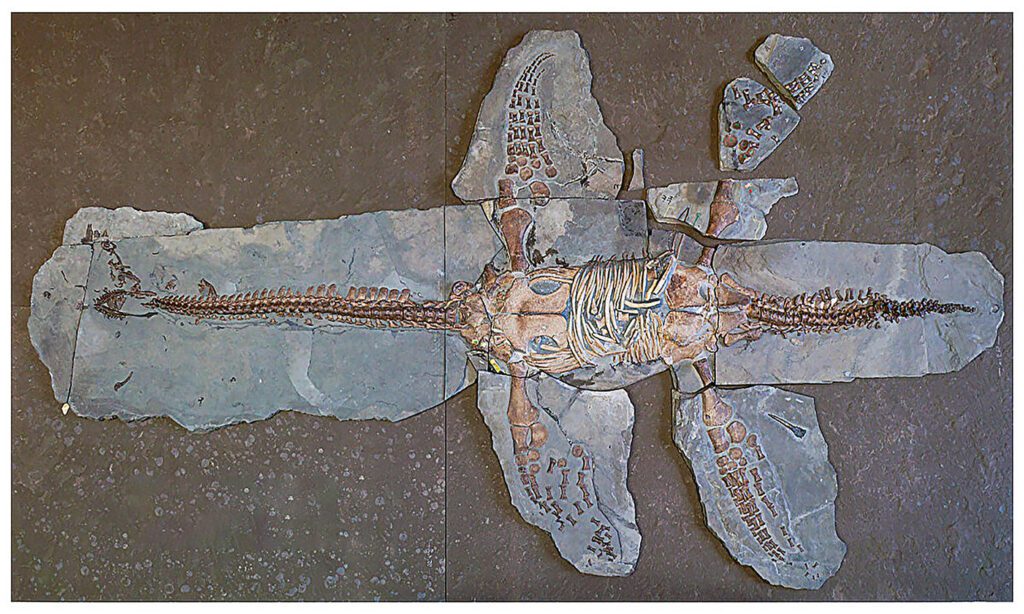The article discusses the remarkable preservation of soft tissue in the fossil of Plesiopterys Wildi, a plesiosaur excavated in southern Germany in 1940. Unlike typical fossil findings where soft tissues degrade quickly, this specimen reveals fragments of skin and flipper that provide unprecedented insights into its anatomy and evolution.
Upon examination, the tail’s skin was found to be layered, showcasing melanosomes that suggest distinct color patterns, challenging previous assumptions of uniformly pale marine reptiles. The flipper exhibited unique triangular scales, indicating adaptations for improved swimming efficiency.
Research indicates this fossil represents a more mature stage of the species, enhancing our understanding of plesiosaur evolution and suggesting regional variations among populations in the early Jurassic seas. Chemical analyses revealed different types of keratin in the skin, pointing to specialized adaptations for swimming.
The findings imply that Plesiopterys utilized advanced agility and camouflage in a competitive environment full of diverse marine predators. This discovery also highlights the potential of historic specimens misfiled or overlooked, emphasizing that modern tools can unlock new understandings of ancient life.
The complete study was published in the Journal Current Biology, emphasizing the ongoing relevance of paleontological research.


